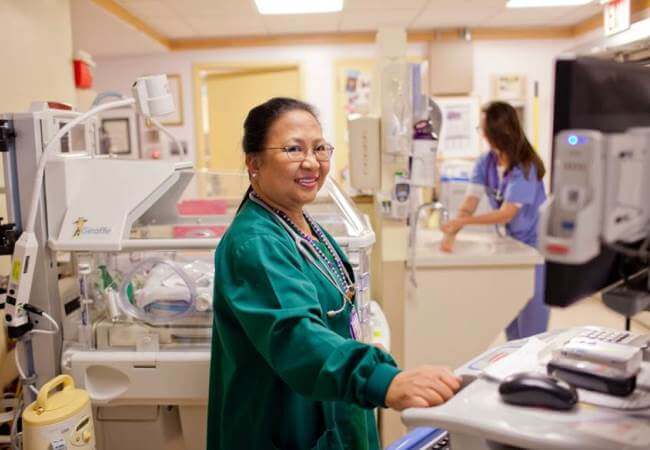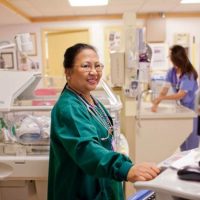
Dec 14, 2016
Technology Works Best When Schools, Hospitals Teach Together
 With the explosive growth of technology in health care, and devices changing almost daily, how and where do nursing students learn the skills and attitudes for safe and effective use of these tools?
With the explosive growth of technology in health care, and devices changing almost daily, how and where do nursing students learn the skills and attitudes for safe and effective use of these tools?
As the latest issue from Charting Nursing’s Future points out, electronic health records, alarms, and lifting devices cannot improve patient care until the right policies are in place and nurses and other clinicians are able to use these technologies efficiently and effectively.
What role can nursing programs play in preparing nurses for the technological challenges they will encounter on entering the workforce?
The Essentials of Baccalaureate Education for Professional Nursing Practice (2008), published by the American Association of Colleges of Nursing, answers that question. The Essentials document outlines the competencies that new graduates from baccalaureate nursing programs must possess in order to practice safely and effectively today.
Although technologies continue to evolve, the principles described in Essentials IV, Information Management and the Application of Patient Care Technology, endure. New graduates are expected to possess skills in using patient care technology and communication devices that support safe patient care, as well as appreciate the ethical dimensions of gathering, sharing, recording, and interpreting data, and of using any form of technology.
Most nursing schools invest time and attention in helping students develop these competencies, but they face obstacles, including curricula already packed tight with other priorities, a range in quantity and quality of the equipment on which students practice, equipment that quickly becomes obsolete, and faculty members who are not necessarily current in the use of these technologies. In addition, equipment varies among clinical facilities, and so students well-trained to use one EHR, ventilator, or monitoring system may need to learn a new system when they enter the practice setting.
Several actions can help.
- Principles underlying the purpose and use of technologies should be emphasized rather than mastery of a specific system.
- Expectations regarding student performance should reflect an entry level of achievement, not competence or proficiency, and clinical facilities need to provide adequate orientation to new graduates on the particular equipment they will use.
- Partnerships between academic settings and clinical facilities can infuse practice setting realities into the educational program, and help practice settings maintain an evidence base to nursing care. Through a partnership, equipment can be shared so that students intending to practice in the setting can learn on equipment they will be using after graduation; and clinical experts may be available to help students learn effective approaches to using technology and dealing with ethical issues that arise.
Ultimately, schools can do only so much. It is up to clinical facilities to teach new graduates about the specifics of their equipment, and provide ongoing training for all staff members as systems are upgraded and devices replaced.
Charting Nursing’s Future has been providing information on key policy issues for the past 10 years. Find past briefs here.
Photos by John Abbott Photography
